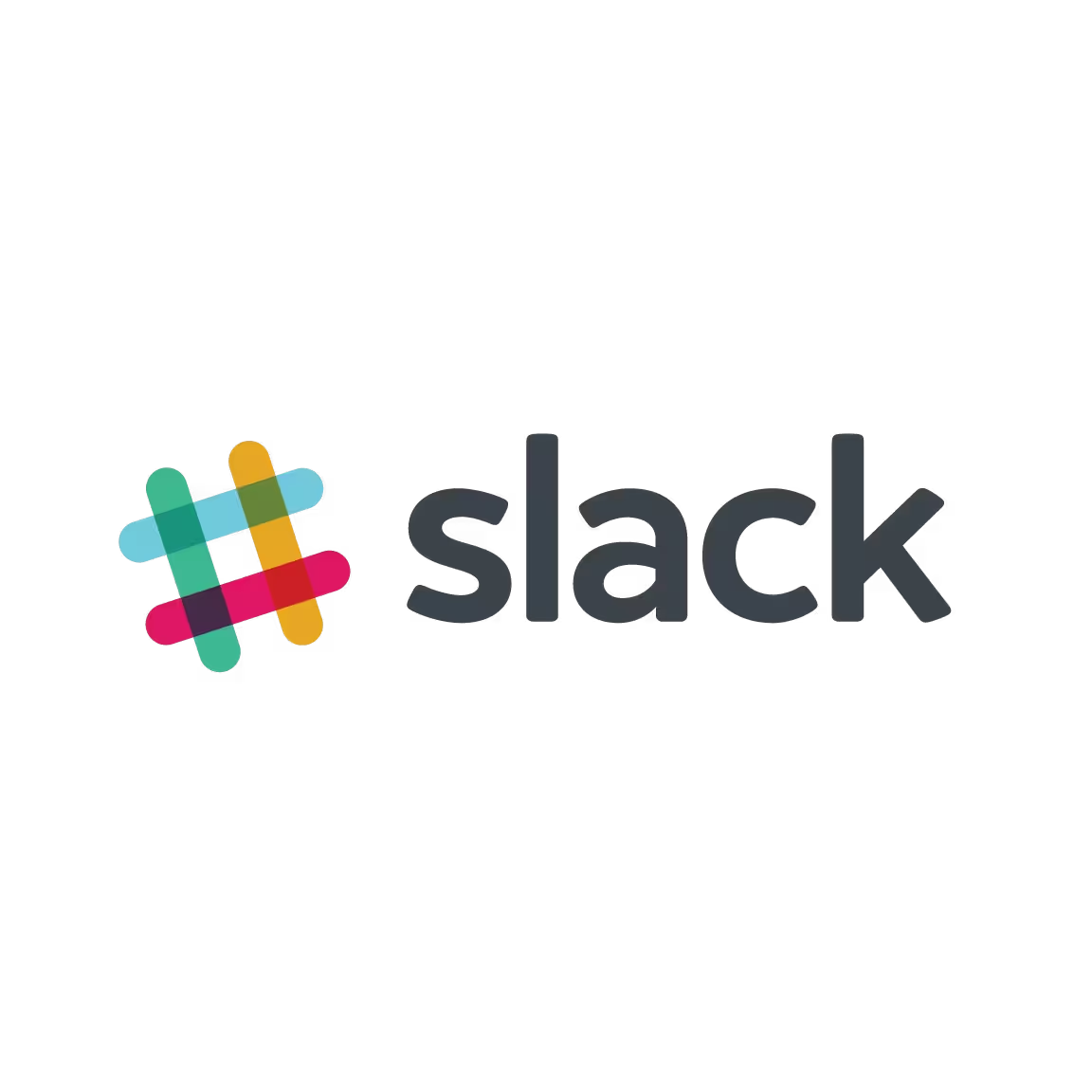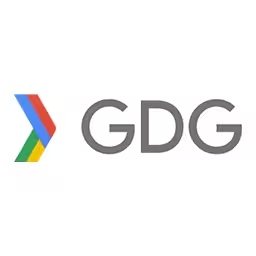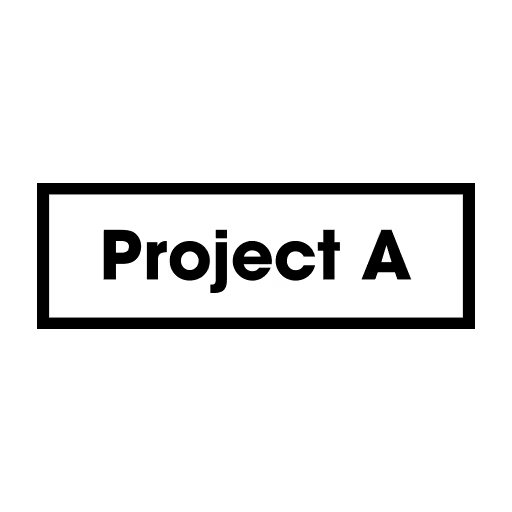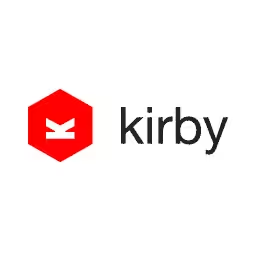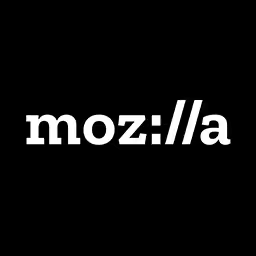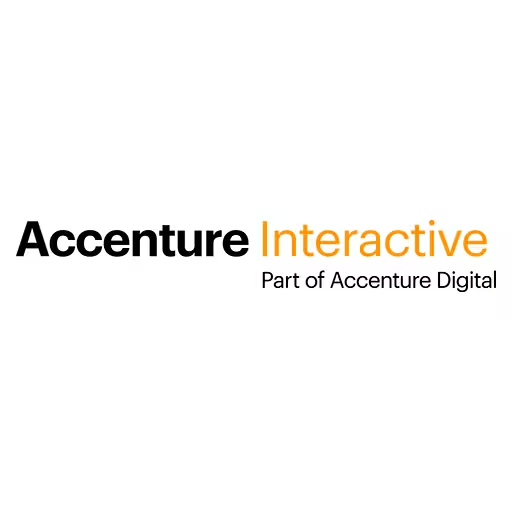Vasilis van Gemert

Vasilis van Gemert is a lecturer at the Amsterdam University of Applied Sciences, where he teaches the next generation of digital product designers how to design things with the web as a material. He’s also a student himself. He studies the appearance of randomness, the aesthetics of inclusive design, and the different definitions of quality.
Talk: Exclusive Design
The Web is here for everybody. This means that we can make stuff that works for spoiled brats like myself, and at the same time removes hurdles for people with disabilities. By using super clever ideas like the Inclusive Design Principles we can build stuff that’s true to the nature of the web, that truly works for everyone.
I wanted to know what happens when you reverse these Inclusive Design Principles. What happens when you design exclusively for someone with very specific needs, for instance a blind person? I’m working on a few experiments with tailor made webdesign and will share the results with you. Can Design for One help us create better designs for all?
Transcription
Audience: [Applause]
Vasilis van Gemert: Pfew. [Laughter] So--
Well, thank you for having me. That was a very nice and kind introduction. A colleague of mine, Yuri Westplat, a very talented colleague of mine, he made this presentation. Well, not the whole presentation. I’m not going to repeat his presentation, but the first few slides are actually his.
He said that when he started designing interfaces, digital interfaces, it felt like being on a tropic island. The whole island is for yourself; and, look at the beauty. Wow! I want to be there. It’s nice and warm, and there are lots of things to explore.
Then the first book got published, and it said, “Well, maybe we should do things like this, right? We found some patterns, and they work this way.” Then another book got published, and it said, “Well, there are these Web standards that we have to use.” Then a third book got published about, well, let’s say something like how you should layout forms, and another book about accessibility.
Then this was what his job looked like to him, right? This is what it feels like to him right now. He’s not very happy with it. He says, “Okay, I can peep through this little hole and maybe put it somewhere else. Then it looks like that. If I’m really creative, I can do this; I’m allowed to do this.”
Audience: [Laughter]
Vasilis: That’s about it, so he got bored; moved over. He’s actually designing the soul of the blockchain. I don’t even know what that means. [Laughter] He really needs something else, right? That’s what he’s doing now.
If you follow this way of reasoning of Yuri, he actually reached peak graphical user interface. If you look at maybe some of you might remember Adam Walterstock (phonetic) a few years ago at Beyond Tellerrand. I think he showed this pyramid back then, which goes from functional, a few steps up to pleasurable. This is peak graphical user interface, if you ask me, or you can call it functional, as we learned yesterday by Yiying Lu.
I’m not sure if he’s right. I mean this is the kind of shit that we make. We keep repeating and copy/pasting this kind of crap. It’s not even robots that make this. This is humans that do this. I’m not really sure if Yuri is correct about it that we reached peak graphical user interface. But, for the sake of the argument, we have reached peak graphical user interface.
Now, a few months ago I invited Leonie Watson over to do a talk and a Q&A at the university where I work. Leonie is a blind developer. I asked her to prepare a talk about the question, what is a delightful user experience for somebody who is blind? I came up with this question because I had asked this question to a blind student of mine, and she couldn’t really answer it. I thought, well, maybe Leonie can answer it.
Leonie said, “An interface for me is pleasurable if I can get the job done any way possible.” This was actually pretty depressing. This means that it’s pleasurable if she gets the job done.
Now, let me try to visualize this for you. With the pyramid, it would look like this. She basically says if it’s functional, it’s pleasurable. Even if it’s functional sometimes, it’s pleasurable, which means functional without the fun, which sounds like “ctional”--
Audience: [Laughter]
Vasilis: --which is not really something that you can pronounce, so it’s not really something that we should be aiming for, right? Our ambition should be higher. If we try to visualize this in a visual way, it would mean that the Beyond Tellerrand website will look like this. We would accept it if it would look like this all the time.
Audience: [Laughter]
Vasilis: Please don’t unsubscribe to our hourly emails, and this is something that I actually copied. By continuing, you will sell your soul to Marc, and you will eat my terms of service.
Audience: [Laughter]
Vasilis: We would be happy with that because we can actually read the stuff here. Well, with a little bit of trouble, we can do that.
Another example would be if it looked like this. Well, it’s not really readable. But, well, we’re developers. We can view source and then find--
Audience: [Laughter]
Vasilis: --the copy somewhere there, right? This is good enough. This is actually good enough for Leonie Watson. I said this is really depressing if you ask me. This is the level of user experience that we managed to create in the last 25 years that we’ve been developing, that we’ve been designing graphical user interfaces.
You can say this is really, really depressing. You could say, “Wow! We have this whole island to explore.” [Laughter] I prefer the last attitude, so we have this whole island to explore when it comes to designing interfaces that are not really four ourselves.
Now let me try to explain to you why I like the Web this much. There might be some of you who might have seen these slides before. Go ahead. Take a nap. We’ll wake you up later.
Audience: [Laughter]
Vasilis: A few years ago, I saw this illustration in a book that Smashing Magazine published. I really like this illustration. My wife liked it as well. We had a very boring wall in our house, and we decided to paint this illustration onto our wall.
Now, this is quite a lot of work. But, with a little bit of difficulty, after a while, it looks like this. Now, I see the developers amongst you say, “Whoa! That looks good.” I see the designers amongst you say, “Ooh, that’s off the grid.”
Audience: [Laughter]
Vasilis: Indeed, it should be like this. Now, as you all know, in real life there’s no such thing as command Z, right? You cannot undo stuff that easily.
What I had to do is I had to open up Illustrator, which I really don’t know how that works. Then I had to find these files that I created to create the stencils, make them a little bit smaller, sent them over to the laser cutter who lives on the other side of town, and then ask my daughters to please get off of my car; stop drawing on it.
Audience: [Laughter]
Vasilis: So I can drive to the other side of town, pick up the stencils, and then draw every single circle back onto the wall again. Now, this takes a lot of time. It took me maybe three weeks to get it done. Then I sat down on the couch, and I said, “Ah, wow. This is done. This is beautiful. I’m happy. I’m never going to paint anything again.”
Then I thought, “Oh, I have to thank Mike Kus,” right? He created this beautiful illustration. How am I going to thank him? I don’t have any money, so I cannot buy him a present. Don’t even know where he lives. You know what? I’m going to make him a website. I decided to turn this illustration into a website.
Now, the nice thing about the Web, there are many, many, many nice things about the Web, but one of the things that really like and that I talked about before a lot is the fact that, well, maybe I can illustrate it with this illustration. It’s not really the fact that nowadays students can buy really expensive computers.
Audience: [Laughter]
Vasilis: I don’t know about you, but when I was a student, the little money that we had, we had to spend it on, well, drugs and alcohol, basically.
Audience: [Laughter]
Vasilis: This is not about the computers and not about the students. It’s about these mirrors that you see. It’s a work of art that represents the common viewport sizes, the common screen sizes that you used to have back then. I think this was 2012, something like that.
If we were to recreate this work of art here, we would have the whole venue covered in different screen sizes because there are so many screen sizes. You know what this means. This means responsive design. I made this wonderful illustration. The illustration, I turned it into this thing that adapts to different viewport sizes. We can just keep on looking at this if you want to. I mean I love it.
Audience: [Laughter]
Vasilis: That’s why I like responsive design. It gets me into this loop, this endless loop of, oh, it moves.
Audience: [Laughter and applause]
Vasilis: All right. Now, another thing I really, really like about the Web is that it’s a bit chaotic. We could create this beautiful stuff, but some of you might remember there are browsers -- there used to be browsers that don’t support border-radius. I used HTML and CSS to create this image, so what should this thing look like when there’s no border radius in your browser? Should it look like this? Well, to be honest, I don’t think so. This is not a representation of the image. The illustration is an illustration of circles, and this is an illustration of rectangles.
What I decided is that people who use Opera Mini will get to see this.
Audience: [Laughter]
[Chimes]
Vasilis: Right? Which looks good, and you can now, if you’re a good illustrator or a talented illustrator, you might even come up with a better illustration. People with Internet Explorer that doesn’t even support HSL color notation looks like this.
Now, of course, this is funny, and this is a bit ridiculous, but the good thing about it is that now this can be read out. The computer can read this. This means that a blind person can listen to this illustration. If we had something--I really wish we had--in CSS, something like voice family poetic, then it would sound like, “Balls, two connected balls, a blue ball, a blue ball.” Wouldn’t that be fantastic? I mean that’s just something that I really hope we’d have in a few years’ time.
CSS working group, pick that up, please.
Now, the reason why all of this work is because the Web is created this way. It is designed this way. It is supposed to be there for everybody. This is one of the basic principles that is what the Web is built with that was one of the basic, the first ideas of Sir Tim Berners-Lee, who came up with the Web. This is a tweet that he sent out to the Web. It’s not really Twitter. It’s for everyone. The Web is for everyone.
This means it’s actually -- yesterday we started talking about inclusive design. Inclusive design, that’s what the Web is, in principle. It’s made for this. We can create stuff like this amazing drum machine that Hayden Pickering created a few years ago or a while ago.
Do you remember? Some of you might remember the Cicada Principle. Remember that where you used prime numbers to create sort of pseudo-random background colors? Well, I really like that. I said, what do they sound like? With this drum computer, you can see what it sounds like.
[Drums beating]
Vasilis: This is the Cicada Principle. It’s a bit loud.
[Drums beating]
Vasilis: You can actually control this thing with your keyboard, so it’s not something that’s just designed for people like me who only use a trackpad or a touch device. It’s also designed for people who can only use the keyboard.
It even works pretty well with screen readers, which is something that we don’t really test for. I didn’t figure out how to record the screen reader output, so I can’t let you know that, but you’ll try that yourself. This really works. This is designed to work for people with a keyboard.
Now, to do this, we have, for instance, these beautiful, inclusive design principles. The Paciello Group, they published them a while ago. If you read them, they make sense, right? Provide a comparable experience for different people. Consider situations, be consistent: all very, very clever and very sensible stuff.
Now, a while ago, I read this article by Jeremy Keith in which he explained that a good way to test design principles is to see if they still work if you reverse them. And so I decided, well, what does it look like if we reverse these principles? Well, it looks like this.
Audience: [Laughter]
Vasilis: Well, it looks okay, right? I like them. Well, actually, of course, they look like this. It moves from providing a comparable experience to providing a unique experience. Consider a situation. It goes into studying the situation. It asks you to be innovative instead of consistent, to take control, things like that.
These are things; when I wrote them, I thought, okay, this is really something that we’re doing, actually. This is how we design stuff if we’re really, really honest. This is how I design because I’m providing a unique experience for myself. That’s what I do when I design.
This is an example of what happens if you do this exclusive design. I really like it. Look at that. There’s this bubbly thing going on with the button. I want bubbly buttons.
Audience: [Laughter]
Vasilis: We should all want bubbly buttons. This should be the level of UX that we want. Look at that! Everything is moving. It’s beautiful. I love it. It doesn’t make any sense, but that doesn’t really matter.
Audience: [Laughter]
Vasilis: It’s beautiful. I like it. We should be aiming for this.
For me, this is a pleasurable user interface. It looks like they designed it just for me. Look at this. The menu - bub-bub-bub-bub-bub.
Audience: [Laughter]
Vasilis: Fantastic, right? We need more menus like this.
Now, this is exclusive design for me, for a wealthy, white guy with a very expensive computer, and another very expensive computer in his pocket, usually, you know, people like us. We have the equipment that can render this stuff. I was wondering what such an experience, what would happen if we put this exclusive design, if we designed exclusive, not for ourselves, but for somebody like Leonie or for somebody like Larissa, my student, and put these exclusive design principles in use just for them. Just for them, not for everybody who is blind because what does that mean? Is there something like everybody who is not blind? Is it a group? I don’t think so.
If we make tailor-made design just for one single person and use these principles, providing a unique experience then starts to make sense, especially if we see that we’re not really that good in designing non-graphical user interfaces. Study a situation; of course, we should be studying situations because we don’t know what it’s like. We have to be innovative because we’re not good enough yet. We have to take control. We’re experts in some ways where we have to use our knowledge.
Offer the very best solution instead of offering any or many, many, many good solutions. Prioritizing identity, I really like that. That’s something that we’re not really supposed to do, but there are so many different identities that touch our designs, which is very interesting to start using. Of course, instead of adding value, we should be adding nonsense because we want bubbly buttons.
I like this, and it reminded me of this book that I read. You should all be reading this. It’s a beautiful book, Design Meets Disability. It’s written by Graham Pullin. A very, very good book, and he has this different approach to accessible design.
Now, its most physical product design that he talks about, we can use this for digital product design as well. He wanted to call it Design against Disability. I really like that, but I think some people might not get the joke, like all of you. [Laughter]
Audience: [Laughter]
Vasilis: That was a bit dangerous. They might think that we are designers who hate people with disabilities, but that’s not really what he’s talking about. What he is talking about is that design right now, we approach it from an engineering point of view. Simply said, an engineer says it works, it’s done. He thinks, no, it works; that’s when we start. That’s when we can start adding layers of maybe bubbleness and things like that, things that we won’t come up with from a purely functional point of view.
Glasses are a good example. Thirty years ago it was uncool to have glasses. Glasses were, pff, iron, pieces of iron with glass in it, and it was really uncool. People got bullied for it, for having glasses. Right now it’s just like shoes, right? You buy a few pair of shoes for different occasions, just like you buy a few pair of glasses for different occasions. It enhances your personality. It’s part of your personality. It’s part of your identity. People choose glasses.
He wonders, for instance, Graham Pullin, in this book; he wonders what would happen if, instead of designing--how do you call them--hearing aids from a purely functional perspective where they have to be invisible and very small, which makes them actually pretty shitty, what if we turned them into big things that you can wear, that you can show; it’s not a problem to show them? Then somehow they might turn into superpowers, even, and something that we might want to use as well. A really interesting approach to accessible design, if you ask me.
Things like this, if you lost the under-legs, maybe you want things like this in certain occasions. Not when you’re running or when you have to catch a train, but, well, if you’re at the party. Why not? I’d love to have legs like that. [Laughter]
Okay, these look luxurious, but this is an excellent example. You might know this, these two British guys who work in a shed. A shed is a very British thing, I think. There they produce these arms for kids who lost their arms. The kids can choose the color. They can pick the color scheme. These things are really, really cheap. This is cheaper than a pair of shoes. If you have kids, you know how fast kids grow out of their shoes, so it does make sense to make these very simple, 3D printed arms for the kids that they can have new ones after a few months, and have new color schemes as well. This is really something that kids might get jealous of. Can you please cut off my arm for Christmas? [Laughter]
Audience: [Laughter]
Vasilis: like this one, another example from the book. This is Somiya, as you can read on this button. It’s a very clever button. Now, Somiya has a very severe disability. She cannot talk. She can communicate, though. In this situation, big books and with lots of images. They point at images, and that’s the way Somiya can talk.
But it takes a lot of time to make the thought clear, and there were two things that she wanted to easily say to people. One is, “I’m Somiya. That’s my name.” The other one is, “Sod off.” That’s when she’s annoyed, right? There were these two things. She’s friendly; she wants to say her name. The other one is sod off.
If you personalize this, this is very personal, right? This is her identity. Not everybody says, “Sod off.” Other people might say fuck off, piss off, please leave me alone, or verpiss de, something like that.
Audience: [Laughter]
Vasilis: It’s very, very personal. I like this, this personal approach to design.
Another example for people who are afraid to tell their feelings. They created this bag that you scream into. Rah, this old man; what are you looking at me??!!
Audience: [Laughter]
Vasilis: But nobody hears it. When you get home, you open the bag and it releases your scream.
Audience: [Laughter]
Vasilis: It’s wonderful. It doesn’t really make any sense, but this is not something that you engineer. This is something that you design or that you art. I don’t know.
A really good idea, at the end of the book he asks different designers with different backgrounds to design things that help people. For instance, a stepstool, this is something for really small, tiny, tiny people when they want to go to a bar for instance, and they want to order a beer. Well, the bar is over here, so they have these stools. They climb up, and then they can order the beer.
Now, usually these stools are small and handy, and you don’t really see them. She said, “No, they should have an extra function like a little cough, like, [cough] “Excuse me.” It’s something that the stool could do. I think these are the beautiful details that get an engineered thing to a next level. I really like this approach.
A few years ago I was swimming in Greece, and I saw a fishbowl on the bottom of the sea. This is really true. Indeed, in that fishbowl lived a fish.
What are you doing there? [Laughter]
Audience: [Laughter]
Vasilis: I thought, “Ahh!” I was so happy I had my Go Pro with me then. There lived a fish, so he had the whole fucking sea, the whole Aegean, and he decided; I’m going to live inside the fishbowl.
Audience: [Laughter]
Vasilis: This got me thinking. Pff, maybe it’s good to just do the little things that I do, to not explore the rest of the world. Maybe it’s -- I don’t know. But then the next day I returned, and the fish was gone. Phew. [Laughter]
It turned out I can use this as a metaphor for everything, really. You can find it on Vimeo, so you can use it for any metaphor if you need one. I’m using it right now for the idea that I used to be a front-end developer, and I used to approach everything from a front-end developer point of view. If you didn’t agree with me, well, then you just didn’t understand it. Some of you might have the same approach to quality.
But then I switched jobs. I started working as a teacher. I had many different colleagues from different backgrounds, very, very talented people as well. They had different definitions of quality, and they made sense. Sometimes they were in conflict with my definition of quality. I thought this was really, really interesting.
I decided to start a podcast to talk to these people, talk to different designers, very different designs, very different backgrounds, and just talk to them, listen to them, and learn from them. This really broadened my horizon. Most of them are in Dutch. Sorry -- or, lucky you, you don’t have to listen to 50 hours of babbling. This is something that I did last year. I talked to a lot of designers.
Now I have this backlog of 40-plus of very, very talented people, so I asked them; would you join me? Would you mind joining me for a workshop? Not really a workshop. For the very first The Good, The Bad, and The Interesting: Exclusive Design Challenge. Well, this turned out to be a good title because a lot of people showed up.
What I asked them is to design something for a real person, so not for a persona; no, for a real person. I interviewed people like Marie, who is deaf. She was born deaf, and she has a very specific set of issues that she has to deal with, very different than, for instance, my father who is turning deaf. Really different things, so we cannot design for the deaf. We have to know these people.
I interviewed them, asked them for the problems that they’re facing, and made a list of them, made booklets out of this, and asked these designers, who showed up, to work on this. I gave them these tools. For instance, if you want to work on somebody who is deaf, it’s good to understand what it’s like to be deaf, so I had these headphones with noise on it. I had these things: Cambridge simulation gloves. Now they don’t simulate Cambridge.
Audience: [Laughter]
Vasilis: I wouldn’t know what that is. They simulate arthritis, which they’re very good. They should be in every device lab. Really, really you should Google this, buy them, and test your apps with the Cambridge simulation gloves. They’re fantastic.
If you’re wondering, why all the beautiful colors? Well, that is because I took these pictures, and they’re really ugly, and this just somehow distracts you.
Another thing is I had this device. This is a fantastic device. One of the people that we were working for is my friend, Moraine (phonetic). He has severe motor problems, so it is very hard for him to talk. He cannot control his arms. I had this device, which is a terrible device. You put these pads on your arm, and then you cannot control your arm any more. It gives you a little bit of the impression of what Moraine has to do deal with all day.
Now, Moraine is a very, very clever guy. It’s just he cannot move or cannot control his movements. He’s CTO at a large agency in the Netherlands.
There’s another one. I took it with me here. These are the blindness simulators. I see nothing. Please warn me. [Laughter] Am I still okay?
Audience: (Indiscernible)
[Laughter]
Vasilis: Well, you have to remember, if you use these kinds of things, that they’re even better than the real thing. I mean this is much better than being blind because I can take this off. Somebody who is blind cannot do that. Remember that this is nice to empathize, and it gets you a little bit of an impression of what it’s like, but we’re really, really lucky that we can take these off.
I use these kinds of things to help people get on their way. Then I gave them the exclusive design principles with beautiful colors, again. I printed them out, large, zero format. Had them all over the place.
I asked them to please use these principles to test them for me to see if they work. If they had difficulties using these, at least focus on prioritizing identity because I was really curious what would happen if we focus on identity when we design stuff.
Now, Nicole, she’s over there. That’s her. This is Nicole. She sits right there. [Laughter] She was there. She’s a colleague of mine. If you have any questions about how it was, you should ask her because I was just walking around there all day grinning like a maniac. Oh, fuck; this is beautiful! They all showed up! Look at this! And they’re working for me! Whoa!
She was actually there, and she remembers what it’s like. Shoud (phonetic) was there too, Shoud Lindes. He designs; he decides how the traffic lights work in Amsterdam. That’s fantastic. That guy was just there coming up with incredible stuff for me.
They came up with the Space Lord Construction Kit, which was for Moraine. It solved several of his problems. A really nice project.
Another one that I really, really liked that had a lot of identity in it was this one where they solved the problem for.... It was basically the Microsoft glasses that we saw yesterday. Remember those, which can talk to you, which can tell you there’s a room of 500 people looking at you at the moment? But what they said is we’re not going to put this through headphones. No, we’re going to let the dog talk. The dog is going to tell them, “Woo, there are 500 people looking at you right now!”
That opens new possibilities. The dog can have an identity as well, and the dog can, well, maybe do some jokes. There are many, many new things that you can come up with when you do weird stuff like this, I think. I really like this approach.
The problem that I had with it was that it’s a bit out there, the solutions. Because I had this eclectic mix of designers and I put them together, there was not much focus on what they came up with. It’s not really something that I’m going to build. It’s not helping us any further with non-graphical user interface design. These are very nice ideas, but it’s not going to help somebody, who is blind, further on the Web.
If you follow this URL, you’ll get these PDFs. I’m going to make a website out of this URL. I’ll make it a little bit bigger so you can read it at the back. You can repeat these workshops if you want to, so you get all the descriptions. Here it’s in Dutch, but I published them in English so you can actually use them. [Laughter]
Please, do use these, and do try to use these exclusive design principles to conduct some experiments with how would this work if, for instance, we made the new Vimeo. Then how would Vimeo work for somebody who is deaf? Can we make a pleasurable experience for people or for somebody who is blind, maybe? What would a pleasurable Vimeo be for somebody who is blind? If you’re working on the next Vimeo, try these exclusive design principles for once.
Or if you’re working on a podcast, what would a pleasurable user interface be for podcasts for somebody who is deaf, I guess. Yeah, deaf. Yeah, you cannot hear a podcast. User experience, try to use them and see what you can come up with. Try to come up with new ideas, novel ideas, so we can get this out of this depressing, low threshold.
This is one. You should do this. Is anybody working on the taxes in Germany here, maybe? Maybe building the forms for taxes? The tax -- tax -- taxes are so depressing. I would love to do this with the tax--what do you call it--service. Is it a service? The tax service in the Netherlands, there’s some exclusive design there. A friend of mine Paite (phonetic), he said, “The only pleasurable user experience of filling in tax forms is drinking beer with my friends.”
Audience: [Laughter]
Vasilis: He’s right. Of course, the only interface should be zero interface in these cases. But I think I once filled out these forms or forms like this, and then, after filling them out, I got this message, “Amount to be paid by applicant minus 2,000.” Holy shit, what does that mean? Well, it actually meant that I was going to get 2,000 euros instead of paying 2,000 euros. I mean this is really easy to make a pleasurable user experience out of this, right?
Audience: [Laughter]
Vasilis: Whoo-hoo, 2,000!! Yay! This is not hard, definitely not visually, but how do we do this when we don’t have vision? Maybe I should invite Toby over for a workshop so we can figure out how to make a party out of user interfaces for people who are blind.
Please -- I’ll switch this off.
Please start doing this. The reason why I think that, if you have more focus, if you have more focused groups together, and that I think this might work is because I had one more focus group in this workshop. There were three--the other one is over here--very talented designers, very experienced designers who were more on a strategic level, and they help organizations grow, and they help organizations change. I asked them to fix an issue or to look at the issue that Hidda (phonetic) is having. Hidda is a friend of mine. He has, well, some of you might say this is not really a disability. He’s a front-end developer.
Audience: [Laughter]
Vasilis: The problem that he has is that, as a front-end developer, he is a freelance front-end developer, so he goes from job-to-job. He works at big companies, rather big projects that he works on, and every time he gets into a new project, he has to convince everybody that they should be designing stuff with accessibility inclusively every single time, again.
He’s always afraid that when he leaves the team that they’re going to say, “Ha! Hidda is gone. Now we can design exclusively again.” This is the problem that he has, and he wants to have it solved.
I asked these people, how do we convince all these stakeholders around these projects that inclusive design is actually a good thing? I asked them to use the exclusive design principles to promote inclusive design. I think that’s a bit weird, but it turned out it worked.
They came up with this. They started with the MVP, which, as you all know now, stands for--what is it--maximum amount of shit we can put in a two-week sprint.
Audience: [Laughter]
Vasilis: We learned that earlier today. They took this MVP, and they changed it into MAP, Minimum Accessible Product. They said we need a name. We need something that we can promote. We need something that we can remember, something that sounds okay, and something that managers like, so we need award shows because managers really like award shows or CEOs like award shows. We have the MAP Awards, and we could come up with MAP Ambassadors who do talks at beautiful conferences like this one, and things like that.
They came up with this whole range of things. Of course, with a good and such an idea, such a method, we need a manifesto. They came up with a MAP Manifesto. I really like it. It’s a bit like the inclusive design principles, but it goes maybe a little bit further.
They say the things we make, they are for everyone - really, really for everyone. For all people, not just our users, but also for the organization who is making it.” The things we make, they are made by everyone. This is something that front-end developers amongst you might like. I remember when I was a front-end developer. I used to be at the end of the waterfall. They used to call it the waterfall. It’s actually a sewer. It was at the end of the sewer.
Audience: [Laughter]
Vasilis: Everybody had done their shit, and then there was me trying to make something out of that, made by everyone, no silos, fantastic idea. It starts with everyone, and I really like this one. Now, when we design something we don’t start with everyone. We start with ourselves because we design for ourselves. Or we say we make a persona, this beautiful, average person that doesn’t really exist. We start with one nonexistent person.
If you start with everyone, once you start excluding people, then this has to be a deliberate choice. It’s something that you have to think about. This provides ethical clarity. I really like this. This is a small detail, but it’s really something that, if you say upfront, “We are going to design this for everybody and, if we’re not going to do some feature for somebody, then we have to have a very good reason for it.” I really like that. It’s a bit the other way around.
Well, of course, the things we make are beautiful. The things we make are valuable. I like this as well. Not just from a financial point of view, which is usually what managers only care about, but also from a humane perspective, and this is really important. We should be making stuff for humans. That’s what we do. A humane perspective, I like that. Not just financially valuable, but also from a humane perspective.
The things we make are cheaper. Well, yeah, this is a bit harder to sell, I think. It’s cheaper in the long-run, but this is not something that everybody understands. Many people are just thinking, “Well, okay. Fuck, I need to get this done. We have a two-week deadline,” but no expensive afterthoughts and no expensive add-ons after the fact.
The things we make are flexible, they’re continuous, and they make us feel better. Of course, this sounds corny, but it’s true. It’s good to feel good. When I found out that I could create stuff that are accessible, that made me feel good. Wow! Wow! I’m doing something good. Then when I’m in my hammock, I feel better.
We make implicit bias explicit. I think this is important as well. We have these biases. We learned that today, and we learned that yesterday. There are these biases that we don’t always show that are not always very clear.
We heard of when a woman is strong. What was it called? She’s a bitch. We call her a bitch. When a man is strong he’s, well, he’s an asshole, basically, but we don’t call him that way. Hate and prejudice will surface if we use a method like this where we talk about this stuff because the things we make, they have to spark conversation. It’s a critical method. We have to talk about stuff. We have to be conscious about the choices we make, and they have to be well considered.
Now, if you like this way of thinking, then I would like to invite all of you over. I printed it out here. Oh, the other way around. I have it here. Here’s the manifesto. You can sign here.
I know you’re German, so you think, well, all of us over here? [Laughter] Well, no. You can sign here as well.
If you don’t like this manifesto, you can draw monsters on it. I like monsters. That’s fine as well. Please, do all, come over here and sign the manifesto. That will be fantastic if we could have this thing filled with names.
Okay, thank you very much for your attention.
Audience: [Applause]

